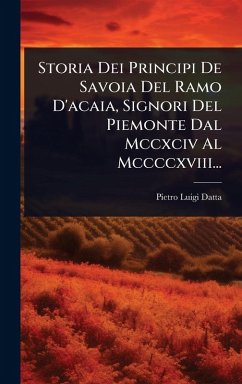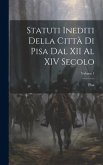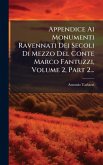Storia Dei Principi De Savoia Del Ramo D'acaia, Signori Del Piemonte Dal Mccxciv Al Mccccxviii... is a historical account, written in Latin, detailing the history of the Savoy princes of the Achaea branch, lords of Piedmont from 1294 to 1418. This meticulously researched work by Pietro Luigi Datta, delves into the genealogy and historical significance of this influential lineage. The book examines the political and social landscape of Piedmont during the late Middle Ages, offering insights into the strategies, alliances, and challenges faced by the House of Savoy. It is an essential resource for historians and genealogists interested in medieval Italian history and the rise of the Savoy dynasty. This work has been selected by scholars as being culturally important, and is part of the knowledge base of civilization as we know it. This work was reproduced from the original artifact, and remains as true to the original work as possible. Therefore, you will see the original copyright references, library stamps (as most of these works have been housed in our most important libraries around the world), and other notations in the work. This work is in the public domain in the United States of America, and possibly other nations. Within the United States, you may freely copy and distribute this work, as no entity (individual or corporate) has a copyright on the body of the work. As a reproduction of a historical artifact, this work may contain missing or blurred pages, poor pictures, errant marks, etc. Scholars believe, and we concur, that this work is important enough to be preserved, reproduced, and made generally available to the public. We appreciate your support of the preservation process, and thank you for being an important part of keeping this knowledge alive and relevant.
Bitte wählen Sie Ihr Anliegen aus.
Rechnungen
Retourenschein anfordern
Bestellstatus
Storno








